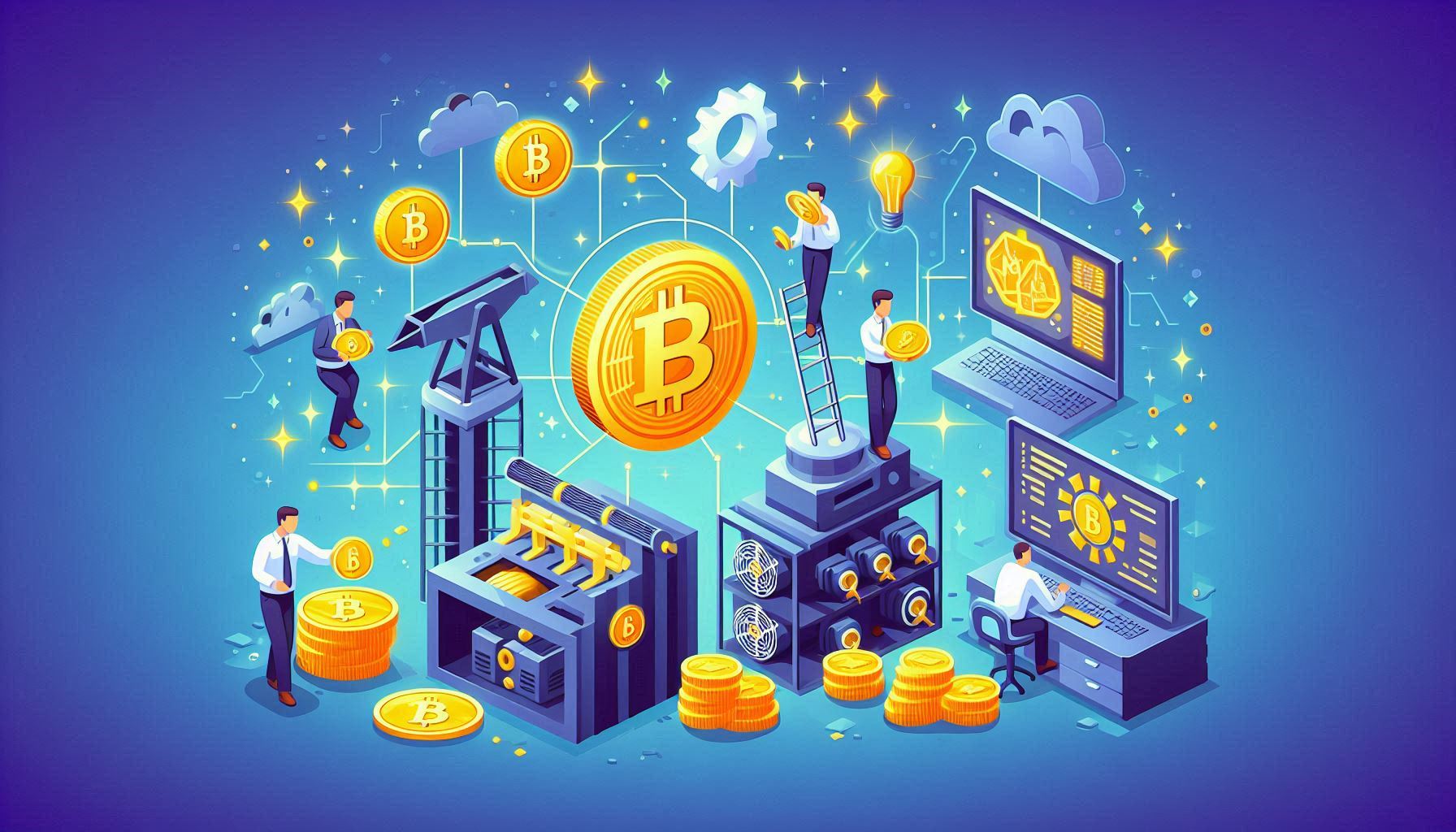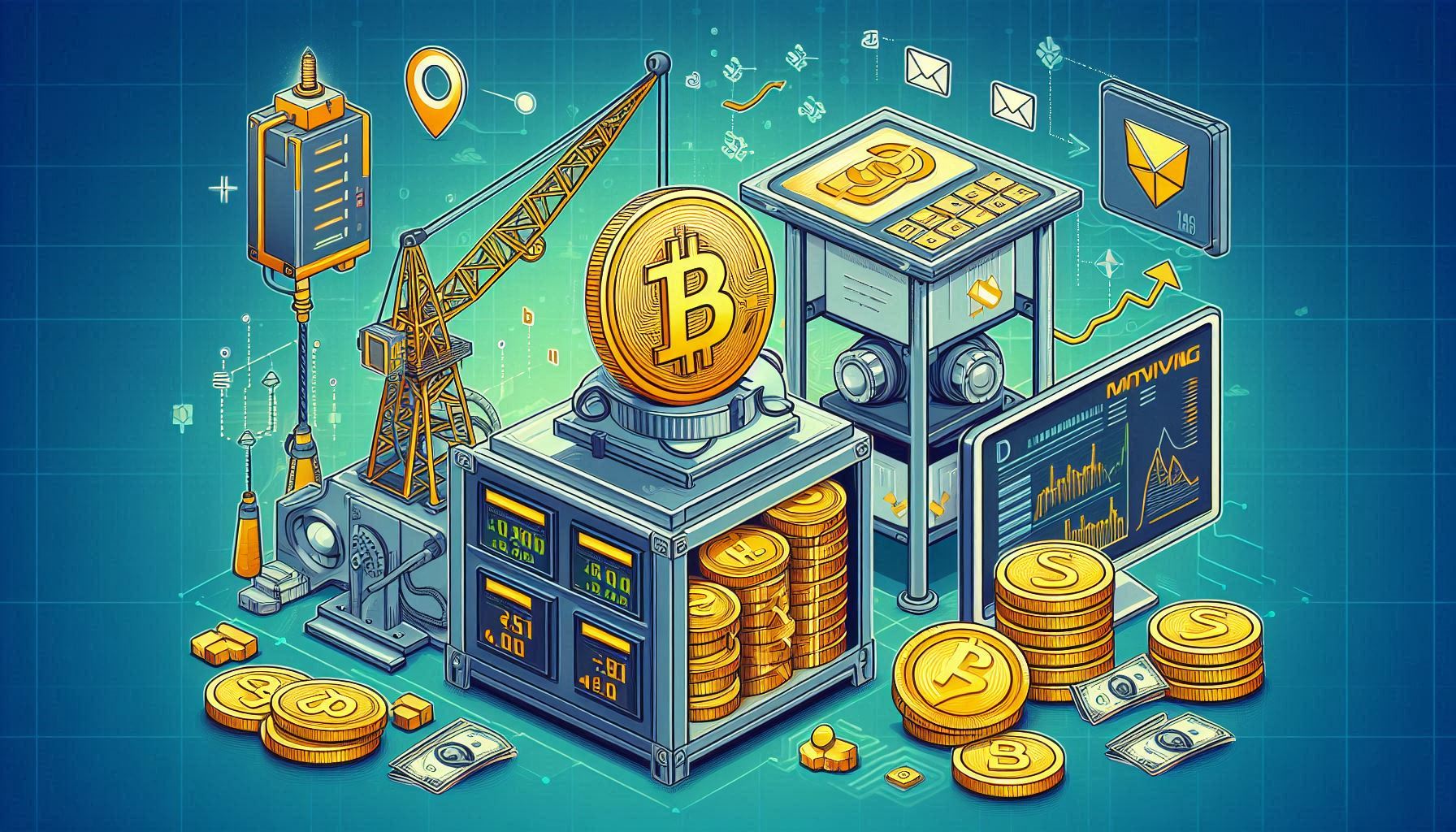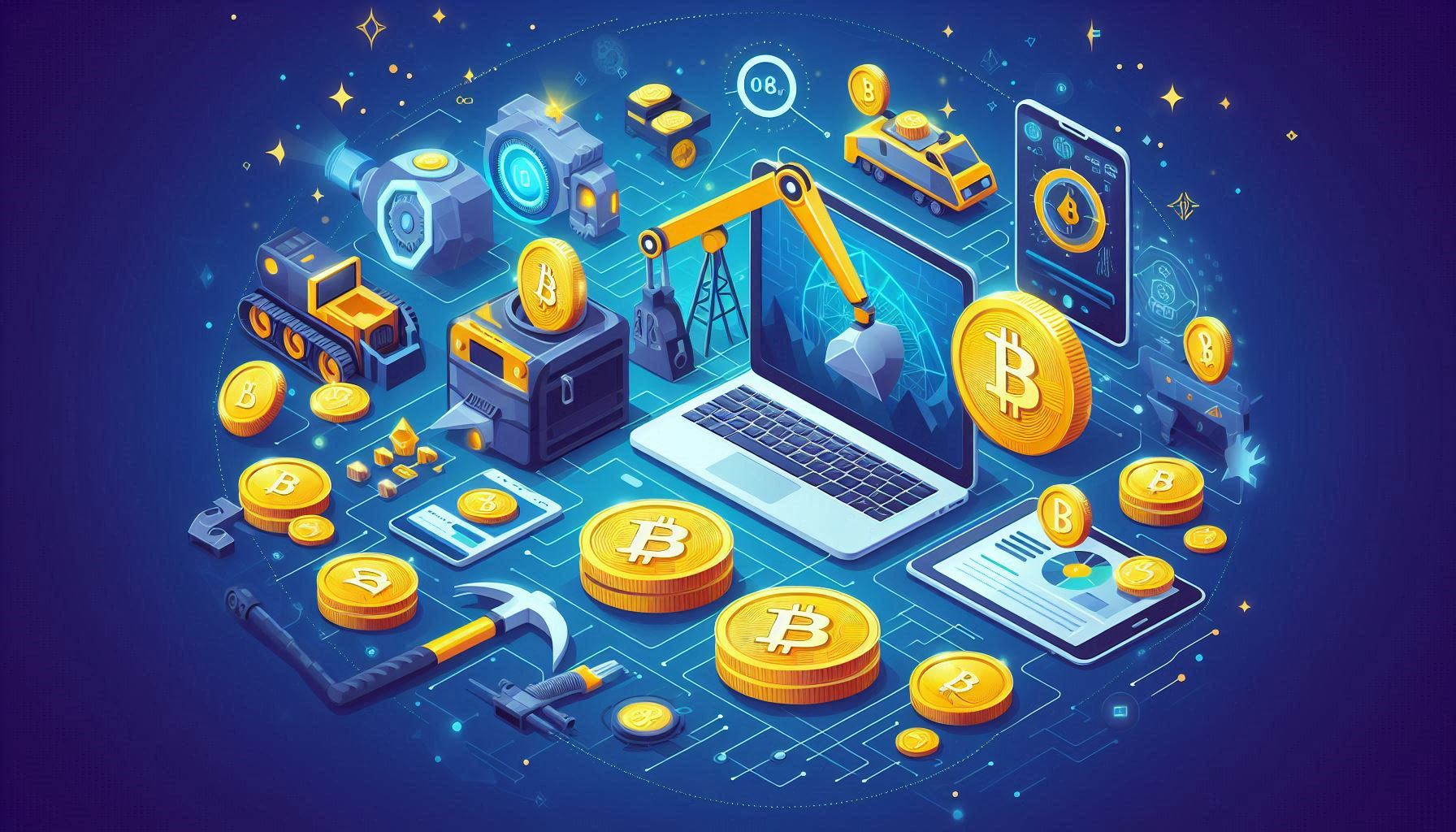What is Cryptocurrency Mining?
Cryptocurrency mining is the process of using computing power to validate and record transactions on a blockchain network. It’s also the mechanism by which new cryptocurrency coins or tokens are introduced into circulation. This process is essential for maintaining the security, decentralization, and integrity of cryptocurrencies like Bitcoin, Litecoin, and many others.
How Does Crypto Mining Work?
The mining process generally looks like this:
-
Transaction Verification: New transactions (such as transfers of cryptocurrencies between users) are gathered into groups called a block.
-
Solving Complex Puzzles: Miners use specialized hardware (like ASICs and GPUs) to solve mathematical problems. The goal is to find a specific number (nonce) that, when combined with the block’s data, produces a cryptographic hash meeting strict criteria set by the network.
-
Race to the Solution: Multiple miners compete to be the first to solve the puzzle. The fastest miner broadcasts the solution to the rest of the network.
-
Network Validation: Other miners verify the solution’s correctness. When consensus is reached, the new block is added to the blockchain.
-
Rewards: The miner who successfully adds a new block receives a reward in the form of newly minted coins (block reward) and sometimes transaction fees from the included transactions.
This entire process is called Proof of Work and it keeps blockchains like Bitcoin secure, decentralized, and resistant to tampering.

What is Cryptocurrency Mining
Types of Cryptocurrency Mining
Several methods and types of mining exist, each utilizing different hardware and levels of investment:
-
CPU Mining: Using a computer’s processor—rare today due to low efficiency.
-
GPU Mining: Utilizing graphics cards, popular for mining certain altcoins that aren’t dominated by ASIC hardware.
-
ASIC Mining: Using Application-Specific Integrated Circuits—machines optimized for mining specific cryptocurrencies (mainly Bitcoin, Litecoin, etc.) and offering high efficiency and speed.
-
Cloud Mining: Renting mining power from data centers, allowing people to mine remotely without owning physical hardware.
Mining Farms and Scalability
Mining can be performed by individuals at home (retail miners) or on a massive scale in industrial mining farms equipped with thousands of machines working around the clock. In recent years, the majority of mining (especially for Bitcoin) takes place in such large operations, typically located where electricity is cheapest.
Mining Profitability and Costs
-
Mining is Capital and Energy Intensive: The main costs are for mining hardware, electricity, cooling, and, for larger miners, real estate and labor.
-
Hardware Efficiency: As technology evolves, newer ASICs and GPUs become more efficient, reducing power consumption per unit of mining power (measured in Joules per Terahash for ASICs).
-
Electricity Costs: Profitability depends greatly on local energy prices. In 2025, only miners with low-cost electricity or the latest efficient machines are consistently profitable.
-
Market Volatility: Coin prices and network difficulty fluctuate, causing mining profits to vary dramatically over time.
-
Environmental Considerations: Cryptocurrency mining consumes large amounts of power—Bitcoin mining alone was estimated to use as much energy as some small countries. However, adoption of renewable energy is increasing among major mining operations.
Certainly! Here’s a much deeper look at mining profitability and costs in cryptocurrency mining:

What is Cryptocurrency Mining
Mining Profitability and Costs – Deep Dive
Mining profitability refers to how much actual profit (in fiat currency or crypto) a miner makes from operating mining hardware—after subtracting all related costs. It’s a dynamic figure influenced by many technical, financial, and market-based factors.
Key Factors Affecting Profitability mining
1. Block Rewards and Coin Price in mining
-
Block Reward: Each time a block is mined (e.g., on Bitcoin), the miner receives a fixed number of newly created coins called the block reward. This amount often decreases over time (for Bitcoin, in “halvings” every four years).
-
Transaction Fees: In addition to block rewards, miners receive transaction fees attached to included transactions. These fees fluctuate based on network demand.
-
Crypto Price: The value of mined coins is only as good as the current market price. High prices increase profitability; price drops can quickly turn profitable mining into a loss.
2. Hardware Costs and Efficiency in mining
-
Initial Investment: The price of mining equipment (ASICs, GPUs, or CPUs), which can range from a few hundred to several thousand dollars per unit. Newer models are costlier but tend to be more energy-efficient.
-
Depreciation: Mining hardware loses value over time—both from wear and tear and technological obsolescence.
-
Efficiency: Measured in Joules per Terahash (J/TH) for ASICs or power per hash for GPUs; the more efficient, the lower your power bill per unit of mining.
3. Electricity for mining
-
Electricity is often the biggest ongoing expense.
-
Mining machines consume a lot of power, running 24/7.
-
Even small differences in electricity cost—measured per kilowatt-hour (kWh)—dramatically impact profitability.
-
Miners often relocate to regions with cheaper power (hydroelectric, surplus renewables, or subsidized countries).
4. Network Difficulty and Hashrate in mining
-
Network difficulty automatically adjusts in most blockchains to maintain a steady block creation time.
-
As more miners join (network hashrate rises), difficulty increases, so each miner gets a smaller slice of the rewards.
-
If many miners drop out, difficulty decreases, which can improve profits for those who remain.
5. Cooling and Maintenance
-
Heat management is essential—mining equipment generates excess heat that must be cooled. In hot climates, cooling costs can rival electricity costs.
-
Maintenance: Replacement of failed hardware, dust removal, fan changes, and downtime all reduce overall profits.
6. Other Costs in mining
-
Facility rent or mortgage (for mining farms).
-
Internet connectivity.
-
Taxes, insurance, security, and regulatory compliance in some jurisdictions.
-
Pool fees (if mining in a pool).
How to Calculate Profitability of mining
Use an online mining profitability calculator where you enter your hardware hashrate, power consumption, electricity rate, and pool fees, and the calculator projects your daily, monthly, or yearly profits/losses.
Example (Bitcoin, August 2025)
Let’s consider an Antminer S21 (245 TH/s, 17.5 J/TH):
-
Power use: 4,300W
-
Electricity price: $0.08 / kWh (global average for miners)
-
BTC Block reward: 3.125 BTC
-
BTC price: $58,000
-
Current network difficulty: All-time high; estimated daily earning at 245 TH/s ≈ 0.000085 BTC per day
Daily Revenue:
0.000085 BTC × $58,000 ≈ $4.93
Daily Power Cost:
4,300W × 24h = 103.2 kWh × $0.08 ≈ $8.26
Net daily profit:
$4.93 (income) - $8.26 (power) = –$3.33 (LOSS each day, even before accounting for hardware depreciation and other costs!)
Profitability only returns if:
-
BTC price rises
-
Network difficulty drops
-
Electricity rates are lower (e.g., $0.03–0.04/kWh)
-
You have the latest, most efficient hardware
Critical Profitability Thresholds of mining
-
Break-even point: The time it takes for mining income to equal your total investment in hardware and setup.
-
Shutdown price: If the coin’s price drops, or electricity costs rise so mining is less than/just above zero profit, many will stop mining until the economics improve.

What is Cryptocurrency Mining
Cost-Saving Strategies for Miners
-
Choose mining locations with ultra-low electricity (e.g., hydropower, wind, surplus electricity).
-
Run only the latest-generation hardware; older, less efficient models become unprofitable first.
-
Utilize immersion cooling or repurpose excess heat to cut cooling expenses.
-
Join mining pools to smooth out earnings, though pools charge small fees.
Risks and Volatility in mining
-
Market swings: Sudden crypto price drops can erase profit overnight.
-
Regulatory changes: Government bans or high taxes can destroy profitability.
-
Hardware obsolescence: New, more efficient miners can cut the lifespan of your ROI window.
-
Network attacks, hacks, or technical failures add to risk.
Mining profitability is highly dynamic and depends on many interlocking variables: coin price, block reward, network difficulty, electricity price, hardware efficiency, and total costs. In today’s (2025) environment, only highly efficient miners in low-cost-power regions typically maintain consistent profitability, while retail or hobby miners often face losses. Before investing, always carefully project costs, calculate profits under different scenarios, and stay aware of market shifts and network trends.
-
Cryptocurrency mining secures blockchains, processes transactions, and releases new coins into circulation.
-
The most common method (Proof of Work) is a global competition of computing power, where only those with efficient hardware and low costs can consistently profit.
-
Mining is evolving; sustainable energy use and novel consensus mechanisms (like Proof of Stake) are gaining importance in the crypto world.

